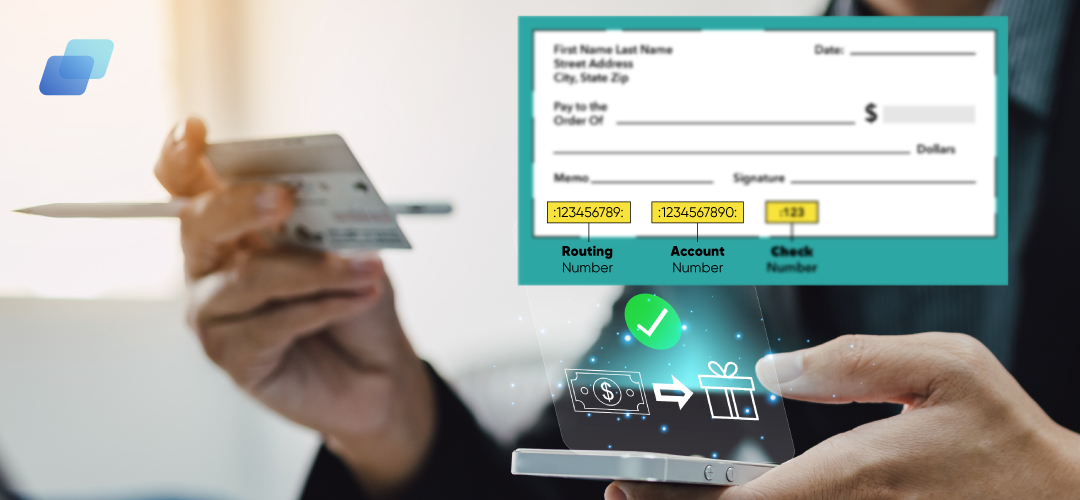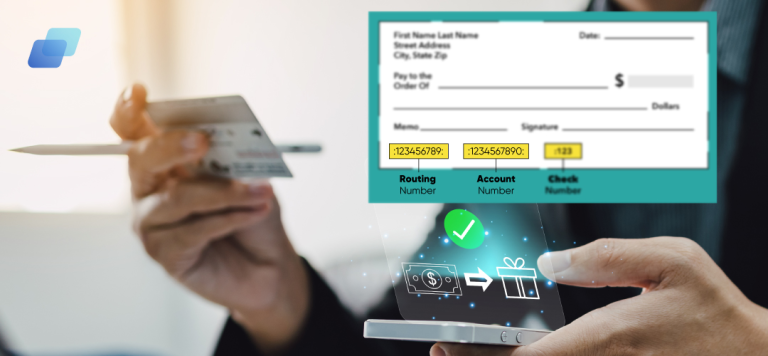Transferring funds has never been easier, thanks to advancements in technology and online banking services. In which, we can transfer funds with routing and account number. This method allows individuals to transfer funds quickly and efficiently, without the need for physical checks or cash.
We will discover the ins and outs of transferring funds using routing & account number and instant transfer with routing and account number Cash App.
Transfer funds with routing and account number: Ins and outs
If you want to transfer money to someone else’s bank account in the US, you will need to know their routing and account number.
These are two sets of digits that identify the bank and the specific account where the money will go.
What are routing and account numbers?
A routing number is a nine-digit code that identifies the bank or financial institution where an account is located. It is also known as an ABA routing number or a routing transit number (RTN). The routing number helps to direct electronic payments, such as wire transfers, ACH transfers , direct deposits, and bill payments, to the right destination.
An account number is a unique string of numbers (and sometimes letters) that identifies an individual account within a bank or financial institution. It is usually between 8 and 12 digits long. The account number helps to distinguish different accounts that belong to the same or different customers.

How to transfer funds with routing and account number?
How to find routing and account numbers?
There are several ways to find your routing and account numbers.
One of the most common ways is to look at your paper checks. At the bottom of each check, you will see three sets of numbers: the first set on the left is the routing number, the second set in the middle is the account number, and the third set on the right is the check number.
You can also find your routing and account number on your bank statements, online banking, or mobile app.
If you want to transfer money to someone else’s account, you will need to ask them for their routing and account number. You can also use online tools or apps that allow you to look up routing numbers by bank name or location.
What are some ways to transfer funds with routing and account number?
There are different methods to transfer money with routing and account number, depending on your needs, preferences, and costs. Here are some of the most common ways:
Wire transfer
This is a fast and secure way to send money from one bank account to another, usually within the same business day.
However, it can also be expensive, as both the sender and the receiver may have to pay fees. To initiate a wire transfer, you will need to provide your bank with the recipient’s name, address, bank name, routing number, account number, and sometimes a SWIFT code or IBAN for international transfers.
ACH transfer
This is a type of electronic payment that moves money between bank accounts through the Automated Clearing House (ACH) network. It can take one to three business days for an ACH transfer to complete.
It is usually cheaper than wire transfers, as there may be no or low fees involved. To initiate an ACH transfer, you will need to provide your bank with the recipient’s name, routing number, account number, and sometimes a type of account (checking or savings).
Online payment service
This is a convenient way to send money online using a third-party service or app that connects your bank account with the recipient’s bank account.
These services may charge fees depending on the amount, speed, and source of funds. To use an online payment service, you will need to create an account with the service provider and link your bank account using your routing and account number.
Then you can send money to another user of the same service using their email address or phone number.
Check
This is a traditional way to send money by writing a paper check and mailing it or handing it over to the recipient. The recipient can then deposit or cash the check at their bank. This method can be slow and risky, as it may take several days for the check to clear and there is a possibility of losing or stealing the check. To write a check, you will need to fill in the date, amount in words and numbers, payee’s name, memo (optional), and your signature.
Instant transfer with routing and account number Cash App
Cash App is a faster and simpler way to bank that allows you to send and receive money instantly with just your phone. You can also deposit paychecks, tax returns, and more to your Cash App balance using your account and routing number.
Here’s how to set up direct deposit with Cash App:
- Tap the Banking tab on your Cash App home screen
- Select Deposits & Transfers
- Select Copy Details
- Provide the account and routing number when prompted for a bank account during direct deposit setup
To get a direct deposit form:
- Tap the Banking tab on your Cash App home screen
- Select Deposits & Transfers
- Select Get Direct Deposit Form
- Fill out your employer information, the amount you would like to be deposited from each paycheck, and provide your signature
- Select Email Form and enter the recipient address before tapping send
Your completed direct deposit form can be viewed at any time by tapping Get Direct Deposit Form from the Banking tab and selecting View Previous Form. Your account and routing number can be used to set up direct deposit with any employer.
You can receive up to $25,000 per direct deposit, and up to $50,000 in a 24-hour period. With Cash App, you can also pay bills online using your routing and account number.
Just enter your Cash App account and routing number on the payment page of any website or app that accepts ACH payments.


 DNBC Team
DNBC Team